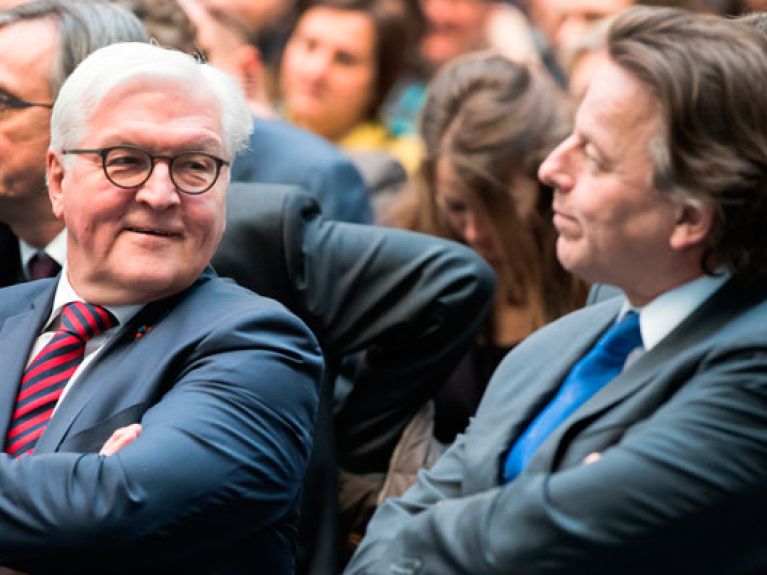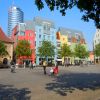Learning from one another
German and Dutch cities’ experiences of refugee integration – and what this has to do with the crisis facing the EU.

Take for example Mössingen. The town at the foot of the Swabian Jura has some 20,000 inhabitants, a number that recently swelled by 326 refugees. Are they managing to get a foothold in their new daily lives? What is going well, what isn’t? Boris Kühn, the town’s refugee and integration coordinator, paints a mixed picture at the Dutch-German Forum in Berlin. There are lots of success stories, he relates, but there continue to be considerable challenges.
Firstly, too many refugees are still living in large, central accommodation instead of flats – even when their application for asylum has been approved. Moreover, during the asylum process they often get caught in a “labyrinth of bureaucracy”. Yet the aspect that worries Kühn most is the insufficient access to the labour market. Only roughly one in five of the immigrants living in Mössingen since 2014 has a permanent job or is in training. And even the few successful cases were almost all down to voluntary helpers, he says, not the authorities.
More than 200 attendees from politics, business and academia
What towns like Mössingen and communities in the Netherlands can learn from one another: That is the focus of the Dutch-German Forum. Migration and integration are the themes of the 2017 meeting. More than 200 representatives from politics, diplomacy, business and academia gathered in Berlin to exchange ideas. The Forum has promoted direct dialogue on topics of the day since the early 1990s.
Integration is also an important topic for Wil Houben, Mayor of Voerendaal. The town in the southern Netherlands has likewise accepted refugees – and drawn attention to itself with the special commitment shown by its residents. Houben understands the difficulties Kühn describes. In the Netherlands however, red tape is kept within limits. This, Houben concedes, is also down to the lower numbers and more manageable structures. The Dutch provinces don’t have as much a say as the German Federal states; for the most part The Hague controls the process. The procedures are clear: Refugees live in central shelters during their asylum application process, after which they are evenly distributed between the municipalities. The latter in turn have a duty to allocate them an apartment. This works significantly better in the Netherlands because there is far more subsidized housing in Dutch towns and cities – some 40 to 50 percent of flats are government supported.
Food for thought for big questions
The Forum lives off small thought-provoking impulses such as this. Yet the meeting also sought to address the big questions, not just those concerning Dutch-German relations. Ties between the two countries today are good, said German Federal Foreign Minister Frank-Walter Steinmeier at the opening together with his Dutch counterpart Bert Koenders (photo). One of the reasons the Forum was originally established was to counter a negative image of Germany in the Netherlands – and very little of that remains today, Steinmeier continued. Yet he is troubled by developments in Europe. “The EU is facing the greatest crisis in its history. Yet today we need it more urgently than ever before.”
Talking with young attendees at the Forum, Steinmeier and Koenders also addressed the rising nationalism and right-wing populism in Europe. The Dutch go to the polls in March 2017, and right-wing populist Geert Wilders’ party is in front according to surveys. “We will win back lost terrain”, stated Koenders, confident that the trend can be reversed. Steinmeier emphasized that Europe is “in escalation mode”, yet democracy thrives on compromise. Germany and the Netherlands need to strike the necessary balance together. “We must step up and fight to defend reason.”
More on the Dutch-German Forum on the Deutschland Blog

